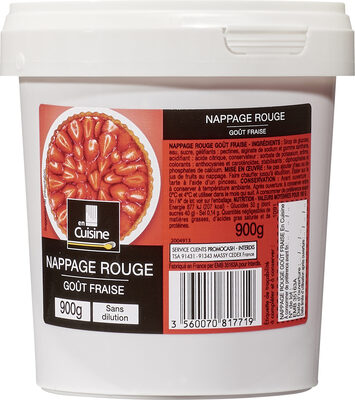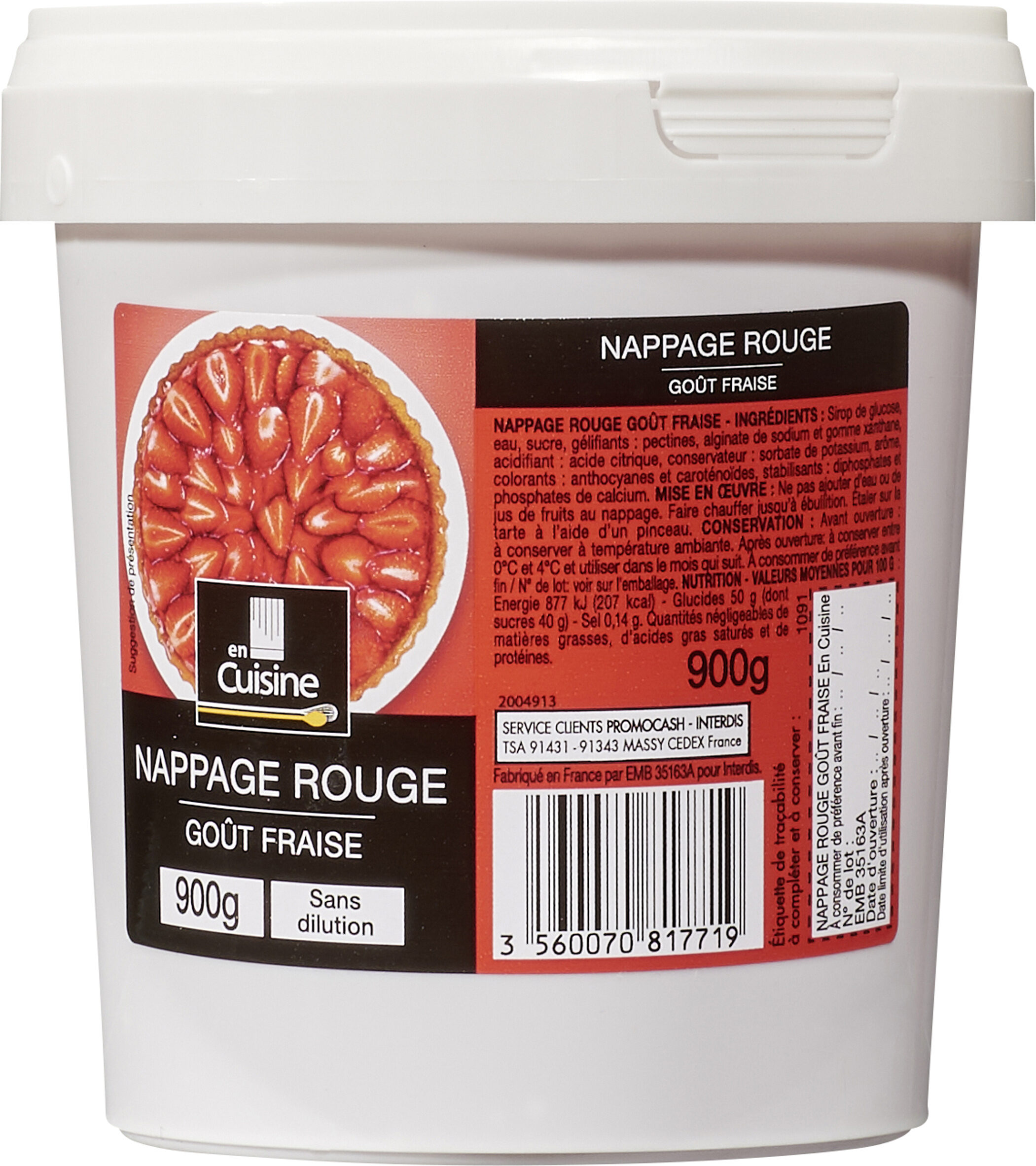Nappage rouge gout fraise - Carrefour - 900 g
Important note: this product is no longer sold. The data is kept for reference only. This product does not appear in regular searches and is not taken into account for statistics.
This product page is not complete. You can help to complete it by editing it and adding more data from the photos we have, or by taking more photos using the app for Android or iPhone/iPad. Thank you!
×
Some of the data for this product has been provided directly by the manufacturer Carrefour.
Barcode: 3560070817719 (EAN / EAN-13)
Common name: Nappage rouge gout fraise
Quantity: 900 g
Brands: Carrefour
Categories: Cooking helpers, Toppings
Labels, certifications, awards: Made in France
Producer: Fabriqué en France par EMB 35163A pour Interdis.
Traceability code: EMB 35163A - Luitré (Ille-et-Vilaine, France)
Stores: Carrefour
Countries where sold: France
Matching with your preferences
Health
Ingredients
Food processing
Additives
Ingredients analysis
Nutrition
Environment
Packaging
Transportation
Other information
Other information: 900g Sans dilution
Preparation: Ne pas ajouter d'eau ou de jus de fruits au nappage. Faire chauffer jusqu'à ébullition. Étaler sur la tarte à l'aide d'un pinceau.
Conservation conditions: Avant ouverture: à conserver à température ambiante. Après ouverture: à conserver entre 0°C et 4°C et utiliser dans le mois qui suit.
Customer service: SERVICE CLIENTS PROMOCASH - Interdis - TSA 91431 - 91343 MASSY Cedex - France
Report a problem
Data sources
Product added on by carrefour
Last edit of product page on by org-carrefour.
Product page also edited by desan, ecoscore-impact-estimator, fixbot, kiliweb, roboto-app.






